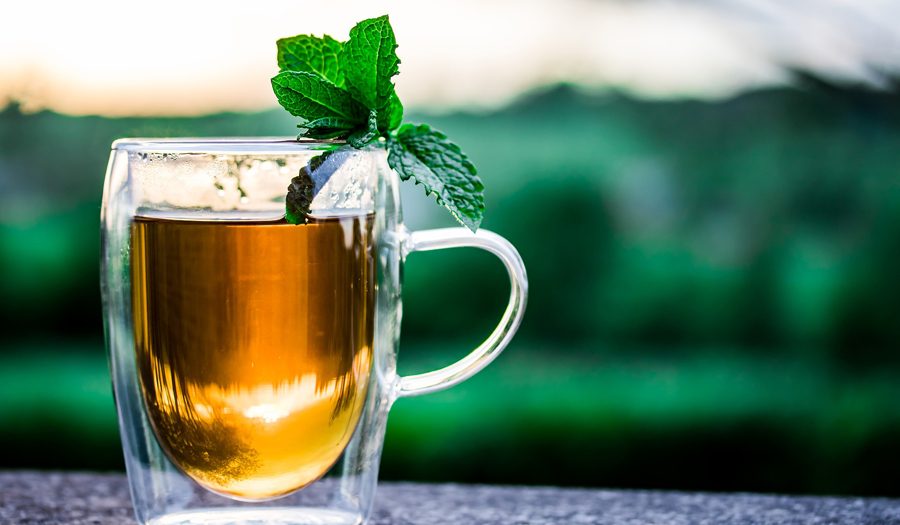
Home » Read between the leaves: Tea is good brew for you
Read between the leaves: Tea is good brew for you

February 13, 2019
By Marilou Shea
Did
you know that for every cup of coffee consumed daily in the world three cups of
tea are consumed? Or that next to water, tea is the most consumed beverage the
world over? There are more than 1,500 varieties of tea varying in color and
taste. Consumers today are beginning to think of tea with the same devotion as
coffee, especially here in the United States, primarily because of its vast
assortment, applications and perceived health benefits.

Food Truck Academy
Green
tea has been the darling of the industry for the last few years, going from
health food co-op groupies to mainstream consumers in a nano-second, thanks to being featured on the Dr. Oz
show and in brand giants like Arizona, Lipton, Gold Peak, Fuze, Nestea, Teas’
Tea, Peace Tea, and Honest Tea, just to name a few.
But
there’s more to the tea trends than just the green kind.
One
nifty one is that we may see a new neighbor joining the local coffee scene in
the form of a “tea bar.” Craft tea blending, nitro tea on tap and even tea
cocktails will start appearing in some of your favorite hip, urban locales. You
could even consider becoming a tea-tender.
As
I mentioned in last month’s column, Kombucha, or fermented tea, is seeing a
comeback from the 1970s the likes of which is segmenting an already wildly
segmented industry. Gut-conscious consumers are driving the birth of a variety
of home-grown Kombuchas at boutique/lifestyle hotels and chef-driven, trendy
food spots. The goal is to consume the least-processed beverages while
increasing probiotics which in turn pleases the immune system.
While
18- to 34-year-olds in particular love their ready-to-drink tea, all tea
segments — including traditional, ready-to-drink, food service and specialty —
have grown in recent years. According to the U.S. Tea Association, the total
U.S. wholesale value of the tea industry has more than quadrupled — from $1.8
billion in 1990 to $10.8 billion in 2014 and the upward trajectory continues to
climb.
The
root of tea is steeped in folklore, economics and politics. According to
scholars, the origins of the very first tea cup can be found in the Yunnan
province of China in 2737 BC. As legend has it, Chinese emperor Shen Nung, also
a reputable herbalist, was sitting beneath a tree while his servant boiled
water for him to drink. Several leaves flew from a Camellia sinensis tree into
the water, the emperor liked what he tasted and voila!
The
Buddhist monks introduced tea to Japan. Portuguese and Dutch traders and
missionaries brought it to Europe from the island of Java. Although tea is
often associated with the Brits, it really wasn’t until a tea-addicted
Portuguese princess married a British royal and introduced it at court in 1658
that the Brits finally began their own love affair with the beverage known at
the time as “China Drink,” called by the Chinese “tcha,” by other nations
“tay,” or “tee.” (hee!).
The
tea industry is thriving and not surprisingly many nations lay claim to it
today — from Nepal to India, from Britain to Malawi and beyond. British
companies continue to play a leading role in the world’s tea trade but neither
China nor Britain have a monopoly on the industry as they did in the
1800s.
Although
it’s the biggest consumer of their own tea (ahem), China produces more than
18.5 percent of the world’s tea supply. The most common varietals -and easily
accessible in your local retail outlets — are green, oolong, white, flavored
and compressed teas.
Mulanje,
Malawi, is credited with being the tea pioneer in Africa. It was the first to
commercially harvest tea in the 1880s and is responsible for tea cultivation
expansion to other African countries. Tea-producing countries in Africa include
Kenya, Malawi, Tanzania, Zimbabwe and South Africa. They produce about 30
percent of world exports amounting to some 514,742 tons of made tea.
Recent
scientific research indicates that tea drinking may have direct
health benefits but “indicates” is the operative word. I spoke with a local
food industry expert and she said that many of these trends like probiotics,
antioxidants and fermented yumminess have yet to be studied by the scientific
community. Those published reports are critical to consumers because they have
proven data that supports health claims being made by a host of leaf-reading,
cup-toting organizations. So maybe we should take the health benefit claims
with a grain of sugar?
To
help de-mystify the health benefits of tea, there are two key terms to know and
understand: antioxidants and flavonoids.
In everyday living, we expose ourselves to pollution and at times too much sun.
Free radicals arise naturally during the chemical process “in the air” and can
be bad for our health. While I’m familiar with the term from my favorite
skincare brand ambassadors wailing about free radical damage to my skin, they
are also apparently the culprits in diseases like heart disease, stroke and
cancers. To counteract those nasty free radicals, it’s been suggested that by
consistently consuming food and beverages rich in antioxidants that soak up the
free radicals helps us get back to a more healthy, natural state of being. Omm.
Tea is brimming with an antioxidant called flavonoids. According to the UK Tea
& Infusions Association, there is about eight times the amount of
“anti-oxidant power” in three cups of tea than there is in one apple. Wow.
Every time you brew a cuppa two for up to one minute, you about get 140
milligrams of flavonoids.
To
achieve the maximum health benefits from tea, four cups of tea a day is
recommended. Some would also say that
tea also has a soothing effect which could also qualify as a health benefit,
right? It tastes good, it’s supposedly good for you and you may have a
tea-tending job in your future. What’s not to love?
Food Love columnist Marilou Shea is an
adjunct faculty member for Columbia Basin College’s hospitality program and
Food Truck Academy, as well as the creator of Food Truck Fridays.
Local News
KEYWORDS february 2019




